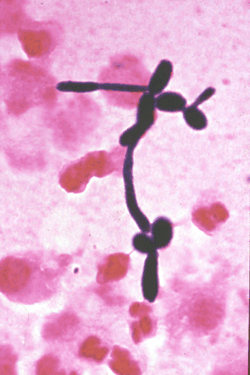
(Yeast ID by sequencing, Yeast Identification by sequencing, Yeast PCR and sequencing, Candida PCR & sequencing)
UWMC Molecular Diagnosis section maintains a rapidly growing DNA database that contains 26S and Internal Transcribed Spacer (ITS) sequences from yeast strains which were identified using phenotypic methods that included morphological and biochemical characterization. The final identification of organism is based on sequence alignment (BLAST) with our local database, as well as the public database at NCBI.
Accurate identification of yeast isolates is an essential task of the clinical microbiology laboratory that enables initiation of proper anti-fungal therapy. For some yeasts, traditional phenotypic identification is difficult, laborious and time-consuming. It can take up to 1 or 2 weeks to identify an isolate to the species level. This issue is confounded by phenotypic variation within species, and the limited battery of phenotypic tests available to distinguish among all established and potential yeast pathogens. It is essential to identify yeast isolates to species level in order to rule out yeasts that are often resistant to anti-fungal drugs (e.g. Candida glabrata, Candida krusei), detect unsuspected pathogens, ascribe pathogenicity to species so far considered to be nonpathogenic and to identify new species. PCR amplification and sequencing of yeast 26S ribosomal RNA (rRNA) and Internal Transcribed Spacer 1 and 2 regions (ITS1 & ITS2) provides rapid, accurate identification of clinically significant yeasts. These target DNA fragments contain signature sequences useful for yeast identification to species level, flanked by conserved regions that are useful for the design of broad-range PCR primers.